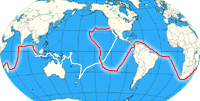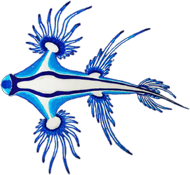Like in Rodrigues not a lot is left from the original flora and fauna of the island. The Dodo bird (Raphus cucullatus), which was already wiped out in 1690, is probably the most known example. As a bird which was not able to fly he and his eggs were easy prey for humans as well as introduced animals like the mongoose (Herpestidae) or rats. Also the local giant tortoises (genus Cylindraspis) were finally wiped out around 1800, like many of the endemic bird species. Big parts of the island were covered by rain forest. Few is left nowadays, because most of it was replaced by sugar cane for sugar and rum production. The first breeding station for Aldabra giant tortoises lies in the south of the island and was founded by Charles Darwin. “La Vanille” is now more like a zoo where not only giant Aldabra tortoises are bred but also crocodiles for meat and their skin. If you have never seen any giant tortoises this is the place to go, otherwise one can do without.
There are a lot of marine mammals around the island. On the western side especially the Tamarind bay you can watch a group of dolphins every morning. This would be a great thing if the boats there would stick to some basic whale watching rules. We can not recommend a trip with one of the whale-watching boats. They definitely haven't heard anything of the international rules of conduct for watching marine mammals. The group of about 20-30 dolphins is surrounded by at least as many boats, on each of them between 15 and 20 people. Everybody wants to get the best picture and you can even get in the water with the marine mammals. That's how it works: The dolphin watch boats throw the snorkeler in right in the way of the group of dolphins. Those people have to swim very fast to keep up with the dolphins at least for a little while and to actually be able to see them at all. Apart from disturbing the animals greatly and drive away their prey, it is even dangerous to the tourists especially when there are calves around. The mothers defend them and one can get bad injuries that way. Nevertheless we watched this show every morning we anchored there.
But you have the opportunity to have an encounter with dolphins all the time around Mauritius. We got lucky a few times. First we spotted a group on our Black River anchorage where they were hunting for prey right around our boat. One other time on a beautiful sailing day we got in the middle of a mixed group of about 100 spinner (Stenella longirostris) and Indo-Pacific bottlenose dolphins (Tursiops aduncus). They had lots of fun riding on our bow wave and followed us around for over an hour breaching next to the boat and generally having fun.
We were happy to see some humpback whales (Megaptera novaeangliae) which are just on their way north to their warmer breeding grounds. They were probably feeding and we could watch them coming up for air and diving again. They don't care about boats and just slowly swim their rounds. The only thing we haven't seen so far are sperm whales, but maybe we will see some on our next crossings.
The best place for snorkeling is definitely between Flat Island and Ilot Gabriel, two islands in the north of Mauritius. The only way to get there is doing an excursion with a local catamaran - if you don't happen to have a shallow draft boat on your own, like our "Pakia tea" :-). The reef pass is very narrow and shallow (app. 10 m wide and 1.5 m deep) and we only found it with the help of locals. We went there three times, but only after getting lots of help the first time entering the pass and finding a mooring. Once you are there it is a beautiful place even though it is a very shallow anchorage. On Ilot Gabriel we found lots of white-tailed tropic birds (Phaethon lepturus) which where just breeding. They breed on the ground and look for nesting places under trees and bushes. They are not scared of humans and when you walk around the island they fly really close to your head.
Either from the boat or the island you can jump in and find a wonderful coral reef around. It has less species then the ones at Chagos or the Maldives but a really good coral coverage. There are not a lot of places around Mauritius where you can see this variety under water. On other places you usually find blocks of lava which are covered more or less by small coral colonies. One white-tipped reef shark was seen while snorkeling but other than that no big fish.
Mauritius also has a few good hiking areas especially in the Black River Gorge National Park. All in all an island full of variety.


_(Michael_Plank).jpg)


_and_Indo-pacific_bottlenose_dolphins_in_Mauritius.jpg)


.jpg)
_crossing_our_path.jpg)



_feeding.jpg)


.jpg)
_nesting_on_the_ground_at_Ilot_Gabriel.jpg)
_still_in_his_nest.jpg)







 >>planned route - join us ...
>>planned route - join us ...